
JUST AS AT THE BEGINNING of the Industrial Revolution, outsized angst over the imminent disappearance of jobs is a rampant concern in our age. When intelligent humanoid robots strip labor away from the vast majority of the working-age population, the apprehension goes, society as we know it may not make it. The Atlantic foretold this prophecy in a cover story titled “The End of Work”; Foreign Affairs exclaimed simply, “Hi, Robot.” It is demoralizing, to say the least. In the summer science-fiction chiller Humans, a teenager wonders why one should aspire to a career in medicine when future robots will do the job better.
A minority of our thinkers are pushing back: Martin Wolf, the ordinarily decorous chief economics columnist at the Financial Times, can barely contain his scorn on this subject; certainly, no super robot race is imminent, Wolf grumbles. At Quartz, my colleague Tim Fernholz thinks that the panic is far overdone not only are robots not frightening, but we need as many as we can get to help us become more productive.
Doing the Robot
No one can predict with certainty the outcome of the torrent of fresh automation washing over us. But this is no faddish debate. As Martin Ford makes clear in his impressively researched and, yes, frightening Rise of the Robots: Technology and the Threat of a Jobless Future, the evidence is ample that artificial intelligence is already occupying jobs previously thought doable only by humans. That Ford writes in a terse, understated style and himself comes from an engineering background — he was chief technology officer of a Silicon Valley software company — makes his message all the more worrying. His book is my pick for the best business book of the year on technological disruption.
この記事は strategy+business の Winter 2015 版に掲載されています。
7 日間の Magzter GOLD 無料トライアルを開始して、何千もの厳選されたプレミアム ストーリー、9,000 以上の雑誌や新聞にアクセスしてください。
すでに購読者です ? サインイン
この記事は strategy+business の Winter 2015 版に掲載されています。
7 日間の Magzter GOLD 無料トライアルを開始して、何千もの厳選されたプレミアム ストーリー、9,000 以上の雑誌や新聞にアクセスしてください。
すでに購読者です? サインイン

Transforming information into insight
Focus on six organizational elements to build a world-class data and insights capability.

THE URGENT NEED FOR SOPHISTICATED LEADERSHIP
The pandemic has highlighted a series of paradoxes inherent to the work of leaders. What comes next will depend on how well leaders face up to them.
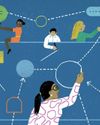
The road to successful change is lined with trade-offs
Rather than trying to convince people your change initiative is the right one, invite them to talk openly about what it might take to implement it: the good, the bad, and the frustrating.
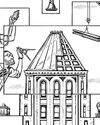
Sustaining productivity virtually
Maintaining productivity levels among remote employees is an enduring challenge. Here are five ways to help businesses and employees thrive while people work at home.
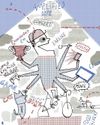
FORWARD TO normal
Entertainment and media companies are building business models that are resilient to the enduring changes in consumer behavior ushered in by COVID-19.

How leaders can promote racial justice in the workplace
Embrace four principles to turn today’s diversity, equity, and inclusion initiatives into sustained progress.

CREATING THE OFFICE OF THE FUTURE
In a remodeled world, it is vital for companies to reinvent ways of working.

Consumer companies must take leaps, not steps
As shoppers show how quickly they can adapt to external shocks, retailers will need to radically reconfigure their business models.
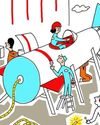
Businesses can fast-track innovation to help during a crisis
“Unrealistic” timelines can actually work. Here’s how.
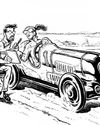
Agility and experience management work better together
Many companies achieve early wins with separate transformational efforts, then stall. But if combined and enhanced using “return on experience,” or ROX, measures, these two programs can unlock each other’s potential.